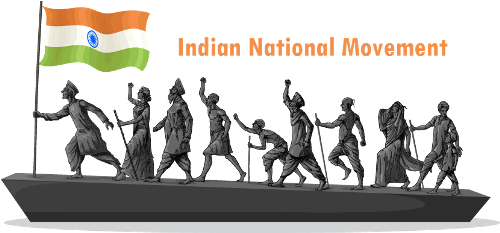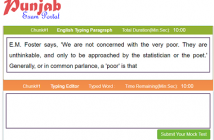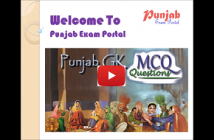Formation of Indian National Congress(1885)
- Formed in 1885 by A. O. Hume
- First session – Bombay
- First President - W. C. Banerjee (72 delegates attended it)
Note – Lord Dufferin was viceroy when INC formed.Â
Partition of Bengal (1905)
- By Lord Curzon Through a royal Proclamation, reducing the old province of Bengal in size by creating East Bengal and Assam out of rest of Bengal.
- The objective was to set up a communal gulf between Hindus and Muslims.
Note – Rabindernath Tagor composed song “Amar Sonar Bangla” for the occasion.
Swadeshi Movement (1905) – Anti Partition Movement
- Lal, Bal, Pal, and Aurobindo Ghosh played the important role.
- INC took the Swadeshi call first at the Banaras Session, 1905 presided over by G. K. Gokhale.
- Boycott of foreign goods were conducted at various places.
Formation of Muslim League (1906)
- Setup in 1906 under the leadership of Aga Khan, Nawab Salimullah of Dhaka and Nawab Mohsin-ul-Mulk.
- It  supported the partition of Bengal, opposed the Swadeshi movement, demanded special safeguards to its community and a separate electorate for Muslims.
Demand for Swaraj(1906)
- In Dec 1906 at Calcutta, the INC under Dadabhai Naoroji adopted ‘Swaraj’ (Self-govt) as the goal of Indian people.
INC Split/Surat Split(1907)
- The INC split into two groups The extremists and The moderates, at the Surat session in 1907.
- Extremists were led by Bal, Pal, Lal while the moderates by G. K. Gokhale.
Minto Morley Reforms (1909)
- The reforms envisaged a separate electorate for Muslims.
- Aimed at dividing the nationalist ranks and at rallying the Moderates and the Muslims to the Government’s side.
Ghadar Party (1913)
- Formed by Lala Hardayal, Taraknath Das and Sohan Singh Bhakna.
- HQ was at San Francisco.
Home Rule Movement (1916)
- Started by B. G. Tilak (April, 1916) at Poona and Annie Besant and S. Subramania Iyer at Adyar, near Madras (Sept, 1916).
- Objective: Self government for India in the British Empire.
- Tilak linked up the question of Swaraj with the demand for the formation of Linguistic States and education in vernacular language. He gave the slogan: Swaraj is my birth right and I will have it.
Lucknow Pact (1916)
- Happened following a war between Britain and Turkey leading to anti-British feelings among Muslims.
- Both INC and Muslim League come together
Note – Both jointly demanded for a representative government and dominion status for the country
August Declaration (1917)
- After the Lucknow Pact, a British policy was announced which aimed at increasing association of Indians in every branch of the administration for progressive realization of responsible government in India as an integral part of the British empire. This came to be called the August Declaration.
Rowlatt Act (March 18, 1919)
- This act gave powers to the govt. To arrest and imprison suspects without trial for two years maximum.
- This law enabled the Government to suspend the right of Habeas Corpus
- Caused a wave of anger in all sections. It was the first country-wide agitation by Gandhiji and marked the foundation of the Non Cooperation Movement.
Jallianwala Bagh Massacre (April 13, 1919)
- People were agitated over the arrest of Dr. Kitchlu and Dr. Satyapal on April 10, 1919.
- General O’Dyer fires at people who assembled in the Jallianwala Bagh, Amritsar.
- As a result hundreds of men, women and children were killed and thousands injured.
- Rabindranath Tagore returned his Knighthood in protest.
Note -Â Hunter Commission was appointed to enquire into it.
Note-Â Sardar Udham Singh killed O’Dyer when the later was addressing a meeting in Caxton Hall, London(1940).
Khilafat Movement (1920)
- Muslims were agitated by the treatment done with Turkey by the British in the treaty that followed the First World War.
- Two Ali brothers, Mohd. Ali and Shaukat Ali started this movement.
Non-cooperation Movement (1920)
- It was the first mass-based political movement under Gandhiji.
- Congress passed the resolution in its Calcutta session in Sept 1920.
Chauri Chaura Incident (1922)
- A mob of people at Chauri Chaura (near Gorakhpur) clashed with police and burnt 22 policemen on February 5, 1922.
- This compelled Gandhiji to withdraw the Non Cooperation movement on Feb. 12, 1922.
Note – After the Non-cooperation Movement, the Congress was divided into two groups- the pro-changers and the no-changers. The pro-changers wanted to enter the legislatures. They were led by C R Das, Motilal Nehru and Vithalbhai Patel. The no-changers wanted to boycott the legislatures. They were led by Vallabhbhai Patel, C Rajagopalachari and Rajendra Prasad.
Swaraj Party (1923)
- Motilal Nehru, CR Das and INC Kelkar (Called Pro Changer)Â demanded that nationalist should end the boycott of the legislative council, enter them and expose them
Simon Commission (1927)
- Constituted under John Simon, to review the political situation in India and to introduce further reforms and extension of parliamentary democracy.
- Indian leaders opposed the commission, because there were no Indians in it.
Note -Â At Lahore, Lala Lajpat Rai was severely beaten in a lathi-charge. He succumbed to his injuries on Oct. 30, 1928
Lahore Session (1929)
- On Dec. 19, 1929 under the President ship of J. L. Nehru, the INC, at its Lahore Session, declared Poorna Swaraj (Complete independence) as its ultimate goal.
- On Dec. 31, 1929, the newly adopted tri-colour flag was unfurled and an. 26, 1930 was fixed as the First Independence Day, was to be celebrated every year.
Dandi March (1930)
- Also knows as Salt Satyagraha.
- Gandhiji started his march from Sabarmati Ashram on March 12, 1930 for the small village Dandhi to break the salt law.
- He picked a handful of salt and inaugurated the Civil Disobedience Movement.
First Round Table conference (1930)
- It was the first conference arranged between the British and Indians as equals in London to discuss Simon commission.
- Boycotted by INC, Muslim League, Hindu Mahasabha, Liberals and some others were there.
Gandhi Irwin Pact (1931)
- Moderate Statesman, Sapru, Jaikar and Srinivas Shastri initiated efforts to break the ice between Gandhiji and the government.
- The two (government represented by Irwin and INC by Gandhiji) signed a pact on March 5, 1931.
- In this the INC called off the civil disobedience movement and agreed to join the second round table conference.
- The government on its part released the political prisoners and conceded the right to make salt for consumption for villages along the coast.
Karachi Session (1931)
- It endorsed the Gandhi-Irwin Pact.
- This session is also memorable for its resolution on Fundamental Right and National Economic Program Â
Second Round Table Conference (1931)
- Gandhiji represented the INC and went to London to meet British P. M. Ramsay Macdonald.
- However, the session was soon deadlocked on the minorities issue and this time separate electorates was demanded not only by Muslims but also by Depressed Classes, Indian Christians and Anglo Indians.
The Communal Award (Aug 16, 1932)
- Announced by Ramsay McDonald.
- It showed divide and rule policy of the British.
- Gave representation of Muslims, Sikhs, Indian Christians, Anglo Indians, women and even Backward classes.
Note – Gandhi ji, who was in Yeravada jail at that time, started a fast unto death against it.
Poona Pact (September 25, 1932)
- Between BR Amedkar and Gandhi Ji
- In this, the idea of separate electorate for the depressed classes was abandoned, but seats reserved to them in the provincial legislature were increased.
Third Round Table Conference (1932)
- Proved fruitless as most of the national leaders were in prison. The discussions led to the passing of the Government of India Act, 1935.
Note – Â BR Amedkar Attended all three round table conferenceÂ
Demand For Pakistan
- Chaudhary Rehmat Ali gave the term Pakistan in 1923
- In 1930, Iqbal suggested that the Frontier Province, Baluchistan, Sindh and Kashmir be made the Muslim State within the federation..
- Mohd. Ali Jinnah of Bombay gave it practicality.
- Muslim League first passed the proposal of separate Pakistan in its Lahore session in 1940.
The Cripps Mission 1942
- The British govt. With a view to getting co-operation from Indians sent Sir Stafford Cripps, leader of the House of Commons to settle terms with the Indian leaders.
- He offered a draft which proposed dominion status to be granted after the war.
- Rejected by the Congress as it didn’t want to rely upon future promises.
Note -Â Gandhiji termed it as a post dated cheque in a crashing bank.
The Revolt of 1942 & The Quit India Movement
- Called the Vardha Proposal and Leaderless Revolt.
- The resolution was passed on Aug. 8, 1942, at Bombay. Gandhiji gave the slogan ‘Do or Die’
- On Aug 9, the Congress was banned and its important leaders were arrested.
Note – Aruna Asaf Ali prominent leader in Quit India MovementÂ
The Indian National Army
- S. C. Bose secretly escaped from India in Jain 1941, and reached Berlin. In July 1943, he joined the INA at Singapore. There, Rasbehari Bose handed over the leadership to him.
- The soldiers were mostly raised from Indian soldiers of the British army who had been taken prisoners by the Japanese after they conquered S. E. Asia.
- Two INA head quarters were Rangoon and Singapore (formed in Singapore).
- INA had three fighting brigades named after Gandhiji, Azad and Nehru. Rani Jhansi Brigade was an exclusive women force.
Note – INA founded by Rasbehari Bose with Captain Mohan Singh.
The Cabinet Mission Plan (1946)
- The new Labour Party PM. Lord Attlee, made a declaration on March 15, 1946, that British Cabinet Mission (comprise of Lord Pethick Lawrence as Chairman, Sir Stafford Cripps and A. V. Alexander) will visit India.
- On May 16, 1946, the mission put towards its proposals. It rejected the demand for separate Pakistan and instead a federal union consisting of British India and the Princely States was suggested.
- Both Congress and Muslims League accepted it.
Formation of Interim Government (Sept 2, 1946)
- Based on Cabinet Mission Plan, an interim government consisting of Congress nominees was formed on Sept. 2, 1946. J. L. Nehru was its Vice-President and the Governor-General remained as its President.
Jinnah’s Direct Action Resolution (Aug 16, 1946)
- Jinnah was alarmed at the results of the elections because the Muslim League was in danger of being totally eclipsed in the constituent assembly.
- Therefore, Muslim League withdrew its acceptance of the Cabinet Mission Plan on July 29, 1946.
- It passed a ‘Direct action’ resolution
- Jinnah celebrated Pakistan Day on Mar 27, 1947.
Formation of Constituent Assembly (Dec 9, 1946)
- The Constituent assembly met on Dec 9, 1946 and Dr. Rajendra Prasad was elected as its president.
Mountbatten Plan (June 3, 1947)
- On June 3, 1947, Lord Mountbatten put forward his plan which outlined the steps for the solution of India’s political problem. The outlines of the Plan were:
- India to be divided into India and Pakistan.
- There would be a separate constitutional assembly for Pakistan to frame its constitution.
- The Princely states would enjoy the liberty to join either India or Pakistan or even remain independent.
- Aug. 15, 1947 was the date fixed for handing over power to India and Pakistan.
- The British govt. Passed the Indian Independence Act of 1947 in July 1947, which contained the major provisions put forward by the Mountbatten plan.
Partition and Independence (Aug 1947)
- All political parties accepted the Mountbatten plan.
- At the time of independence, there were 562 small and big Princely States in India.
- Sardar Vallabh Bhai Patel, the first home minister, used iron hand in this regard. By August 15, 1947, all the States, with a few exceptions like Kashmir, Hyderabad and Junagarh had signed the Instrument of Accession. Goa was with the Portuguese and Pondicherry with the French.





6 Comments
When we download what is the password for it.?
In meantime you can read online, We will provide pdf soon
Sir It can be available in PDF File
Sandeep, PDF is not available of this post, You can read online
Can u please recommend book for revenue exam?
Sir. There is little correction needed. General Reginald Dyer fires upon people not o’dwyer (lieutenant general of Punjab at that time).